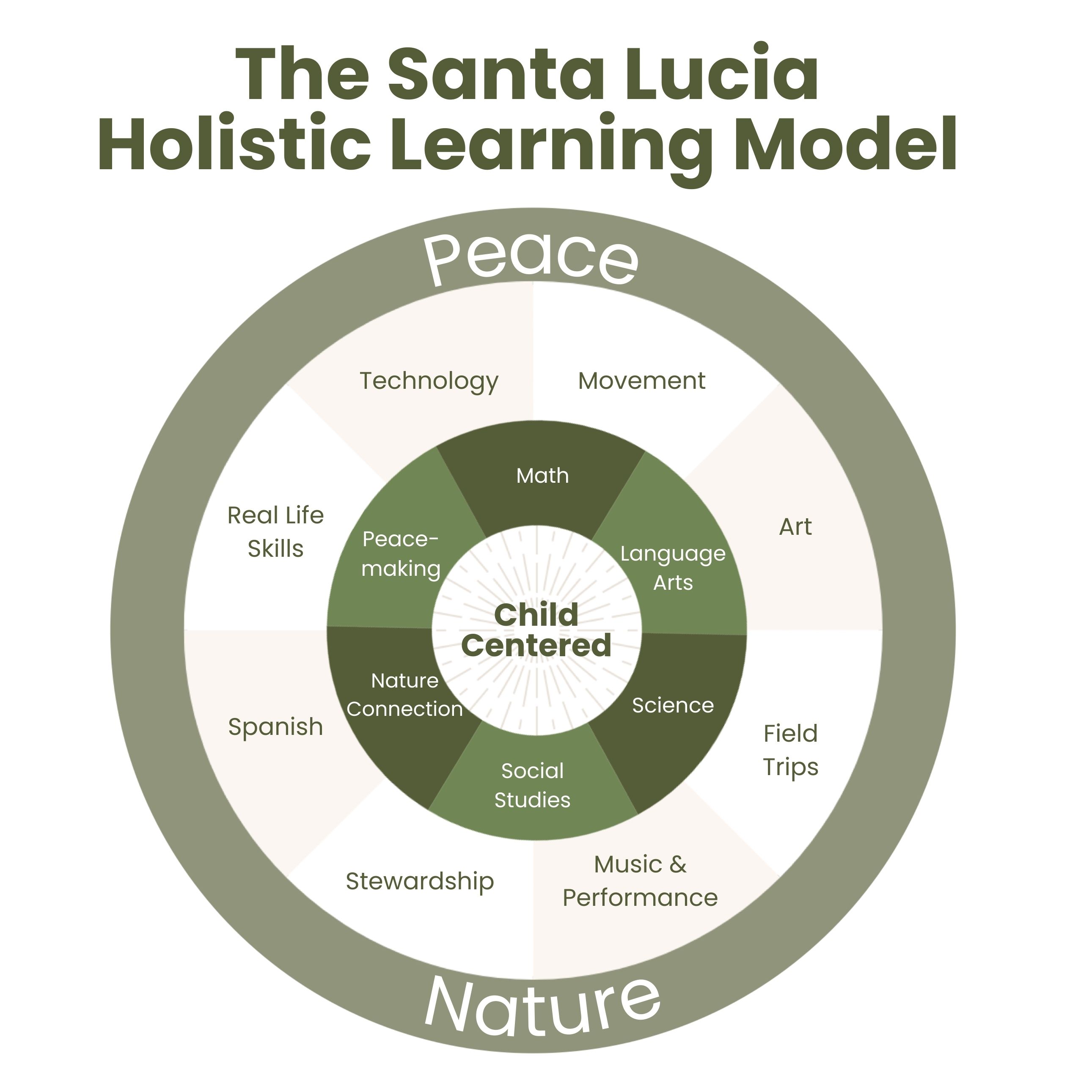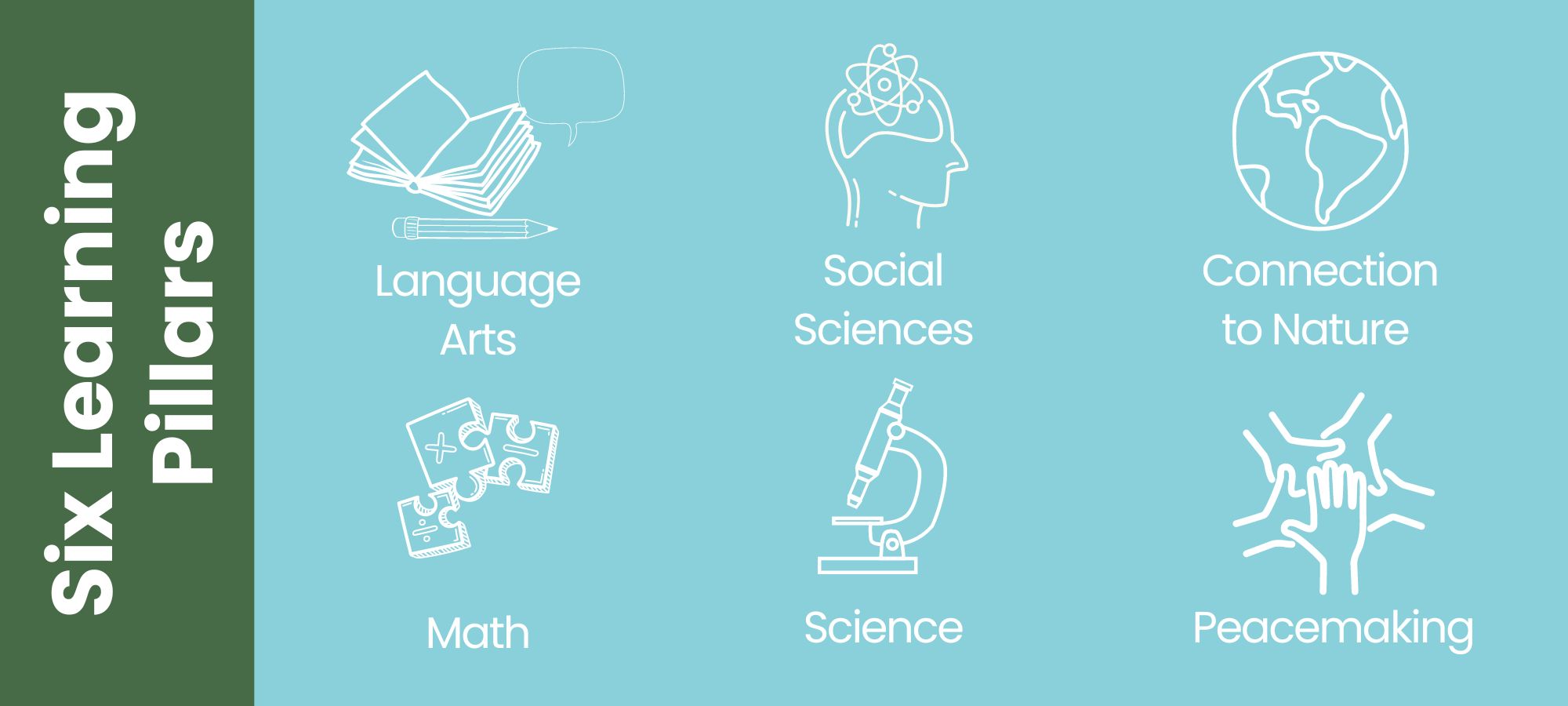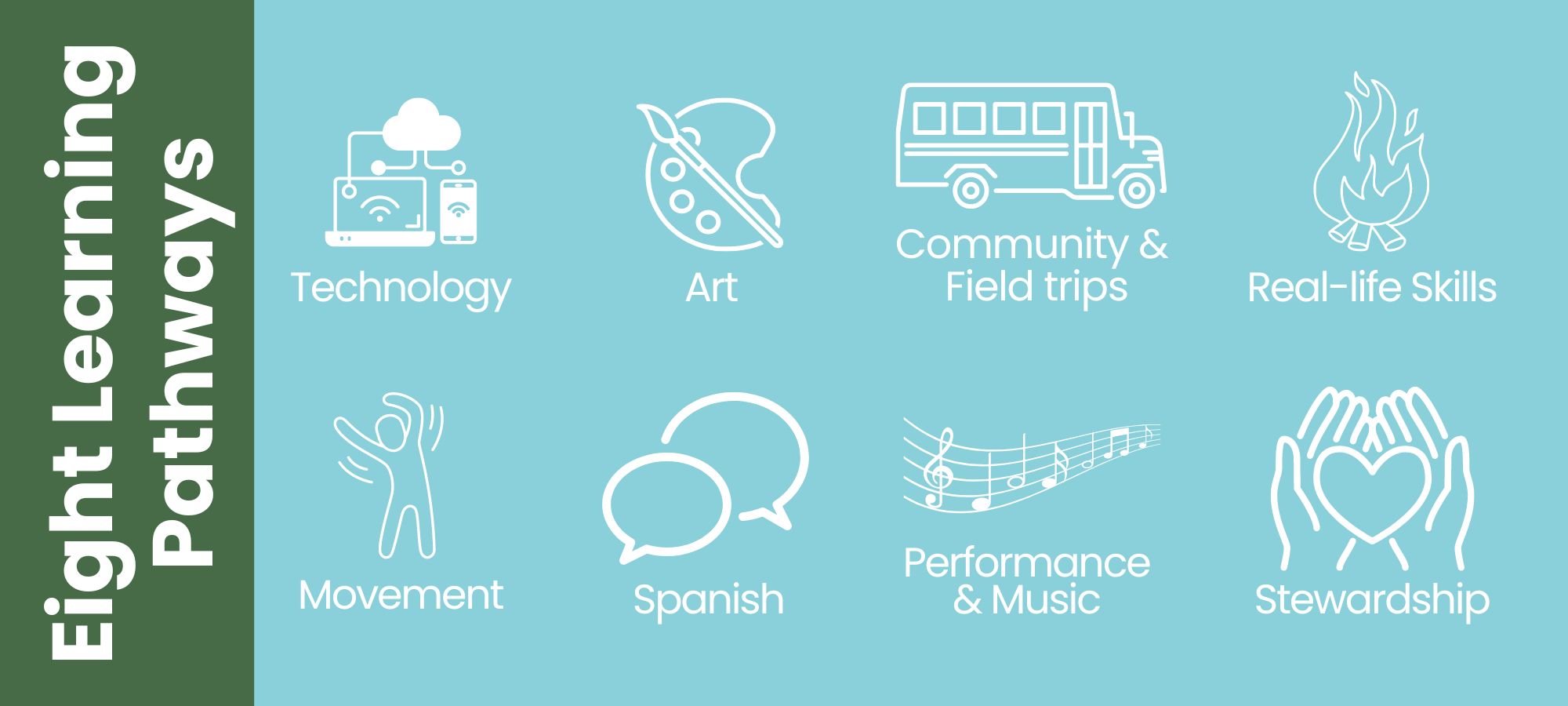Learning Models
The Santa Lucia Holistic Learning Model guides our planning. It shapes how we structure both the school calendar, school days, and our lessons.
There are 3 dimensions to our model:
1) Holistic and child-centered 2) The Six Learning Pillars 3)The Eight Learning Pathways

At Santa Lucia, Child-Centered means:
At the center of our holistic learning model is a belief in honoring the intrinsic learning drive and innate individual worthiness of the child.
At Santa Lucia, Holistic means:
An all-encompassing approach that aims to...
|
• Nurture the physical, emotional, social and intellectual growth of each student. |
|
•Take into account each child's unique individuality and interconnectedness with nature and the world around them. |
|
• Emphasize the integration of academic learning with real-world experiences. |
|
• Foster a deep understanding of ecological concepts and sustainable practices with personal and emotional wellbeing. |
|
• Promote a harmonious balance between academic, experiential, and outdoor learning. |
|
• Santa Lucia School strives to cultivate resilient, conscious, and compassionate individuals who are equipped with the diverse skills and knowledge to thrive in an interconnected world. |
Six Learning Pillars:
Our holistic model is based on six fundamental learning pillars. These pillars provide guidance to the weekly and daily schedules.

Eight Learning Pathways:
Our holistic learning model and six learning pillars are taught through an integrated approach that includes eight core learning pathways.
These modes of learning weave into the students day, allowing them to:
• learn from diverse experiences
• initiate of their own learning
• generalize content across subjects
• grow competence and confidence in a variety of skills


Peacemaking Agreements:
Working Agreements Guide for greater
Connection and Unity
The IN BREATH is gratitude: First, and most important, start with gratitude.
Gratitude is the container for everything that follows.
|
|
|
|
|
|
|
|
|